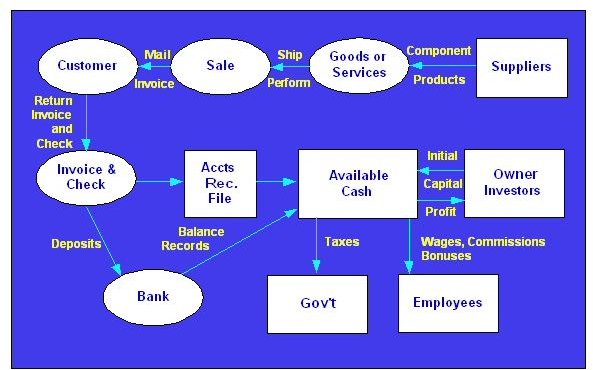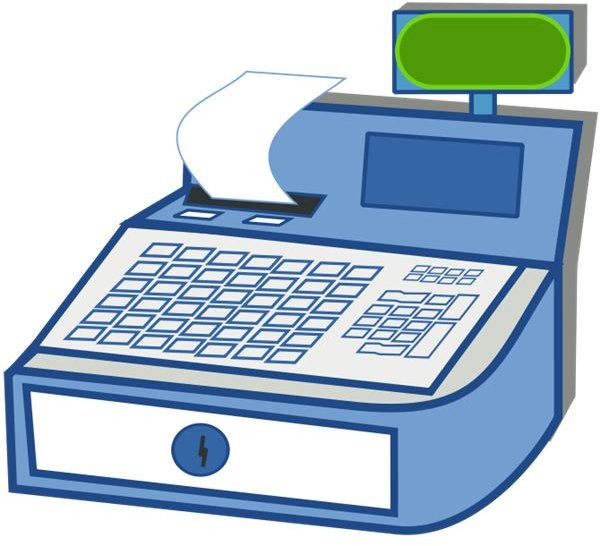Typical Accounts Receivable Fraud Schemes: Examples of Accounting Manipulations
What Makes AR Fraud Possible?
Accounts receivables are vulnerable to fraud schemes because this type of account is easy to manipulate as a means to disregard a cash transaction–or as the counterpart of fictitious sales entries that aim to increase the profitability of the business at year-end cut-off dates.
However, most accounts receivable fraud schemes and any other types of business frauds are successfully perpetuated due to the absence or insufficiency of basic internal controls. Nonetheless, this still doesn’t mean that the implementation of internal controls can make a company or business enterprise totally protected against embezzlements or fund malversation.
In fact, the most difficult fraud schemes to uncover are those that have rigid internal control standards but are circumvented by way of connivance. In cases like these, fraud is often carried out by way of organized or systematic methodology, and their discoveries are often instigated by whistleblowing acts.
As we aim to increase awareness about the possibilities of typical accounts receivable fraud schemes, we also point out certain warning signs and internal control lapses that characteristically indicate that fraud is not too far behind.
Common Accounts Receivable Fraud Committed by Employees

These types of schemes may or may not involve connivance especially if the organization’s internal control system is loose.
Lapping
Lapping is the most common type of fraud committed by employees who handle cash and recording at the same time. It could also involve employees who enjoy good relationships with customers as they are entrusted with money intended as payment for an installment that is about to become due.
-
Under this scheme, an employee intentionally excludes cash payments received from customers who are taking advantage of the discounts given for early settlement of installment payments due.
-
The employee pockets the cash payment and uses another customer’s payment to cover for the previously disregarded payment transaction.
-
Transactions lap on top of each other, as various cash collections are applied as payment to cover for the previously malversed funds.
-
To illustrate by way of example, customer A’s payment is pocketed; later customer B pays but it is applied to customer A’s account. Next comes customer C’s payment but it is applied to customer B’s account. However, successive customers D, E, and F issue checks as payments; hence their payments are difficult to manipulate. Customer G arrives the next day with cash payment but it is used to take care of C’s account; and so the chain continues.
-
During days that no payment transactions are received, the erring employee makes sure that the accounts receivable will not go unpaid beyond its maturity date. This is to avoid any customer complaints that may stem from receiving a billing statement reflecting late payment charges against his account.
-
In cases where no other payments are eligible to cover the unrecorded transaction, the employee will be forced to pay the maturing account. This is to prevent the account from going awry which could lead to the discovery of his fraudulent act.
-
The scheming employee’s undoing arises once he is unable to raise enough money to cover the unrecorded cash payments.
-
In some cases, the internal auditor will note the discrepancy of the dates the discounts were computed as against the actual dates the payments were reflected as reduction of the accounts receivable.
-
If it can be established that there is a pattern by which the discrepancies of dates occur, this will prompt the internal auditor to send out confirmation letters to specific customers whose accounts were affected. The latter will be asked to confirm the records of the company against the receipts they are holding as evidence of payments and to note down any differences.
Please turn to Page 2 for more on Accounts Receivable Fraud Schemes

Accounts Receivable Fraud Committed by Employees (continuation)
Diversion of Funds
Fictitious refunds or early payment discounts can be manipulated by an employee who also handles the tasks of receiving cash and recording the payment. Nonetheless, do not overlook the possibility of connivance between employees performing the cashiering and bookkeeping tasks.
-
Some customers are totally unaware that they are entitled to early discounts in case of early payments.
-
Hence, the original official receipts (OR) issued to paying customers contain the full amount due.
-
On the other hand, the copy of the OR retained by the bookkeeper reflects that a discount was granted, thus, only the net amount will be recorded as payment in the accounts receivable ledger as well as in the cash collection reports.
-
The cash discount then will be diverted to the pockets of the employee or the conniving employees.

Overstatement of Prices
-
Frauds involving overstatement of prices usually entail the participation of the entire unit involved in the selling, cashiering, and bookkeeping process; they may even be orchestrated by the store manager himself.
-
These are cases in which the business owners vest their full confidence and trust in the people manning a business unit, particularly if it is a branch situated far from the main office.
-
Prices of products or services are overstated and the official receipts issued to the customer reflect higher amounts than those reflected in the ORs retained as company records.
-
Usually, the overstatement is uniformly applied to avoid complexities in computations.
-
The differences between the actual amounts collected and the amounts recorded are pooled as a common fund and paid out systematically by dividing the accumulated funds among the employees and manager.
-
However, even if this type of fraud is not discovered while it is currently going on, its drawback is the loss of patronage for the business inasmuch as the prices paid by customers are not competitive.
-
The business unit will then close shop and the fraud may be uncovered if a full audit is launched to determine the value of the assets, which may entail actual accounts receivable confirmations with customers.

Unrecorded Collection on Bad Debt Debts
Bad Debts representing dead accounts technically written-off from the books may not be what they seem.
-
An employee can possibly manipulate payments received from slow accounts receivable, since the protocol in applying payments is to satisfy first the interest, late payment fees, and surcharges imputed in the delinquent account.
-
Often, the amount received from the paying customer is not enough to have a reducing effect on the principal balance. Thus, the employee simply pockets the customer’s payments, without taking up the transaction at all or makes no attempt to cover it with another payment.
-
Fake receipts or receipts taken from those that were previously canceled or detached from un-issued OR booklets are used, so as not to disrupt the current series of the OR booklet in use.
-
However, the customer could get wind of this if his credit report does not reflect the payments he made to settle his debts, even if it was applied as payments for interests and late charges.
Please turn to page 3 to find information about typical company-wide accounts receivable fraud schemes as well as recommended internal control measures.
Typical Accounts Receivable Fraud Schemes by Companies

Most companies manipulate their accounts receivable and bad debts for “window dressing” purposes. The aim is make their company look profitable and financially appealing to investors by releasing or submitting financial statements with overstated income.
-
Managers and accountants will create fictitious sales entries by recognizing fictitious accounts receivable before the company’s book closes at year-end. The related accounts receivable may remain outstanding for a long time and will not be recognized as bad debts, since they will only reduce the succeeding years’ income.
-
In fact, even legitimate accounts receivables are not recognized as bad debts at all to avoid reducing the company’s revenue for the year. Thus, the company’s receivable account becomes bloated, which could likely pique the attention of financial analysts.
-
A method used by erring company officials to reduce the balances of fictitious receivables and to avoid attracting attention is to manipulate the proceeds of treasury stock sales by applying them as settlement for the loan.
-
Bank officials and directors are likewise capable of creating fraudulent mortgage loans receivables since bank funds are actually derived from depositors’ monies. Fictitious loan accounts are secured by over-appraised inferior properties, which are later foreclosed and retained as non-performing foreclosed assets in the bank’s books.
These are only the typical accounts receivable fraud schemes perpetuated either internally at employee levels or for external purposes performed at executive levels. The following are basic internal control measures which if instituted could reduce the possibility of unauthorized or unrecorded transactions:
Recommended Internal Control Measures

-
Segregation of duties and responsibilities; a single employee should not be tasked to handle cashiering and bookkeeping transactions simultaneously.
-
Instituting checks and balances before accounting entries are passed. A supervising bookkeeper will make the main entries to the general ledger account by basing the figures from daily summary reports submitted by the cashier and by the accounts receivable bookkeeper.
-
The subsidiary ledgers and cash validating machine tapes are likewise reviewed daily in which summary totals are checked to see if they conform to the transactions for which accounting entries are made.
-
Rotation of duties between employees should be implemented at least every six months.
-
Employees should be encouraged to take annual vacation leaves, to allow checking of records without being pre-empted by further manipulations.
-
Require the use of passwords before allowing access to machines that make automated entries or processing of transactions; this includes separate passwords of control officers like accountants or managers for any adjusting entries.
-
A control officer should have sole access to dormant accounts, like bad debts. This way, any entries or transactions that will affect this particular account can be reviewed by the control officer and will transpire under the officer’s supervision.
-
Annual and extensive internal and external audits should be implemented, unannounced and unexpected. Surprise audits serve as deterrents for staff and officers alike against manipulation of documents and transactions under their areas of responsibilities. This way, fraud schemes or patterns are more difficult to set-up.
-
Institute whistleblowing policies that provide guidelines on how and to whom internal frauds are reported.
To learn about audit procedures and other internal control measures that could prevent or at least minimize possibilities of typical accounts receivable fraud schemes, readers may refer to a separate article entitled: Audit Procedures for Accounts Receivable.
Reference Materials and Image Credit Section:
References:
- The Free Library.com What’s Your Fraud IQ? — https://www.thefreelibrary.com/What's+you+fraud+IQ%3F-a0215923190
- Internal Control Fundamentals under the COSO Model — dvunvhtQzqHj1jI_YaJu09Uw
zYc4S1rRbTxe73JNMEProFIfb0Hgx9YV7wy4qwLC14nghjDVfp4_qgmh0TJKVRkC76MO7YeVh&sig=AHIEtbSaKS
n&gl=ph&pid=bl&srcid=ADGEESjFvKd7W4wAOuuUQ9y4JOEoGzU8DAdsjLsowupFSIKUY8hKtTTPwD6iVc4omsQ
raud-training-spring-2010.pdf+internal+control+weaknesses+that+allows+fraud+schemes&hl=e
https://docs.google.com/viewer?a=v&q=cache:cvmLMQ3L3H0J:www.nmsu.edu/audit/documents/ic-f
Image Credits:
